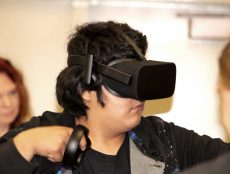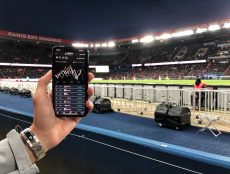
Education Technology
Op-Ed
Promoting Inclusivity for Hearing-Impaired Students Through EdTech
By Jennifer Dawson
January 20, 2022
5% of the world’s population has a hearing impairment that requires a hearing aid or other rehabilitation technology – that is 34 million children and 432 million adults. It has also been estimated that by 2050, the number of people living with a disabling hearing loss that affects daily life will have gone up to 10%. Hearing impairments are often considered to be a hidden disability, and this can sometimes lead to students missing out on vital information, both in the classroom and in virtual learning settings. Speech-to-text services are one way to help hearing-impaired students, but there are plenty of ways to help students use technology, so that they have equal access to education, and are always included in class.
Reducing classroom noise
One of the biggest issues that students with hearing loss have in the classroom is filtering through the noise around them to get the information that they need. Doing this on a daily basis can be extremely tiring and often frustrating, leading to listening fatigue. Students often feel excluded from a positive learning experience, or will simply switch off. Diversity initiatives like EdTech apps are important to promote inclusiveness within the classroom and the workplace. Technology can help everyone to be involved and more engaged so that they work together better as a team. It is impossible for a classroom to be completely quiet, but students and teachers can use an app to help. Chatable (iOs and Android) is an app that reproduces one-to-one conversations but reduces background noise, chatter, music and general hubbub. This helps hearing-impaired students understand the information they need quickly and easily.
Engaging early learners
For very young children with hearing impairments, traditional classroom teaching may present a challenge. If students cannot fully hear the sounds of speech, then it can be difficult for them to replicate the sounds themselves, or understand the meaning of words in context. Using some colorful apps along with the traditional teaching methods can be a great help for early learners. The Auditory Verbal app can help students with hearing aids or cochlear implants detect the Ling 6 sounds and also test their comprehension. Sound Match is a fun online game that has been specially designed to help children with hearing loss distinguish and learn sounds, and Little Ears is another colorful app to help students with language development.
Radio aids and streamers
Radio aids are commonly used in a classroom situations. The teacher wears the transmitter – a microphone, and the student wears a receiver on their hearing aid/aids, and this helps to amplify the sound. The radio aid technology has come on enormously in the past decade, however, and now sounds can be sent directly from laptops, tablets or the television, straight to a hearing aid. Streamers also connect to commonly-used classroom tech and use Bluetooth to transfer the sound straight to a student’s hearing aids.
Using a range of apps and technology in the classroom can really help make learning an inclusive experience for students with hearing impairments. Teachers can then ensure that all students have access to the same educational materials.
Featured Image: Jonas Mohamadi, Pexels.









Great article, I’ll keep posted.
Cool 🙂
[…] this blog we explore the question: should we be teaching students about cryptocurrency? And if so, how could this happen in practical […]
[…] and cryptocurrency is the latest example. In other words, it is a type of digital cash. Bitcoin, the most well-known cryptocurrency, is almost certainly familiar to you. So far, it appears to be […]